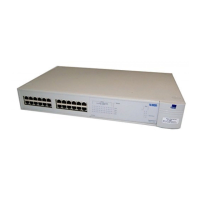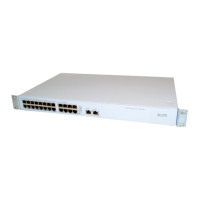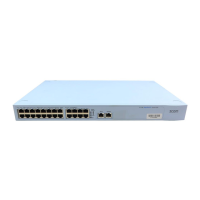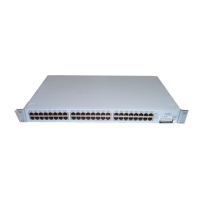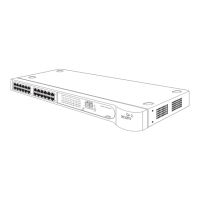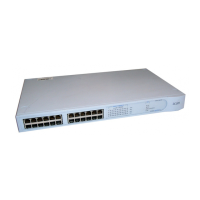Configuring the Current Switch 65
You cannot enable security on a port that is part of a resilient link, or a
port that is part of a port trunk. For more information, see
“Setting Up
Resilient Links”
on
page 79
and
“Port Trunks”
on
page 157
.
PACE
Stack Default
/ Enabled / Disabled
Allows you to specify whether the port uses PACE (Priority Access Control
Enabled) to support multimedia traffic:
■
Stack Default
— The port takes the PACE setting from the Advanced
Stack Setup page. For more information, see “Configuring the
Advanced Stack Settings” on page 76.
■
Enabled
— Use this setting if the port is connected to:
■
A switch, bridge or router that does not support PACE, or has PACE
disabled
■
An endstation that has PACE enabled
■
Disabled
— Use this setting if the port is connected to:
■
A hub
■
A switch, bridge or router that has PACE enabled
■
An endstation that does not support PACE, or has PACE disabled
VLT Tagging
Enabled / Disabled
Allows you specify whether the port uses VLT (Virtual LAN Trunk) tagging.
By specifying that the ports at both ends of a link use VLT tagging, you
can create a VLT tagged link that carries traffic for all of the VLANs
defined on your Switch. For more information about VLT tagging, see
“Placing a Port in Multiple VLANs”
on page 166.
VLT tagging can only be used on links to legacy 3Com devices.
A port cannot use VLT tagging if:
■
It uses 802.1Q tagging — for more information about 802.1Q
tagging, see
“Placing a Port in Multiple VLANs”
on
page 166
.
■
It is the main or standby port of a resilient link, and the other port
does not use VLT tagging — for more information about resilient links,
see
“Setting Up Resilient Links”
on
page 79
.
■
It belongs to a port trunk — for more information about port trunks,
see
“Port Trunks”
on
page 157
.
You cannot disable VLT tagging if the port is part of a resilient link pair.
